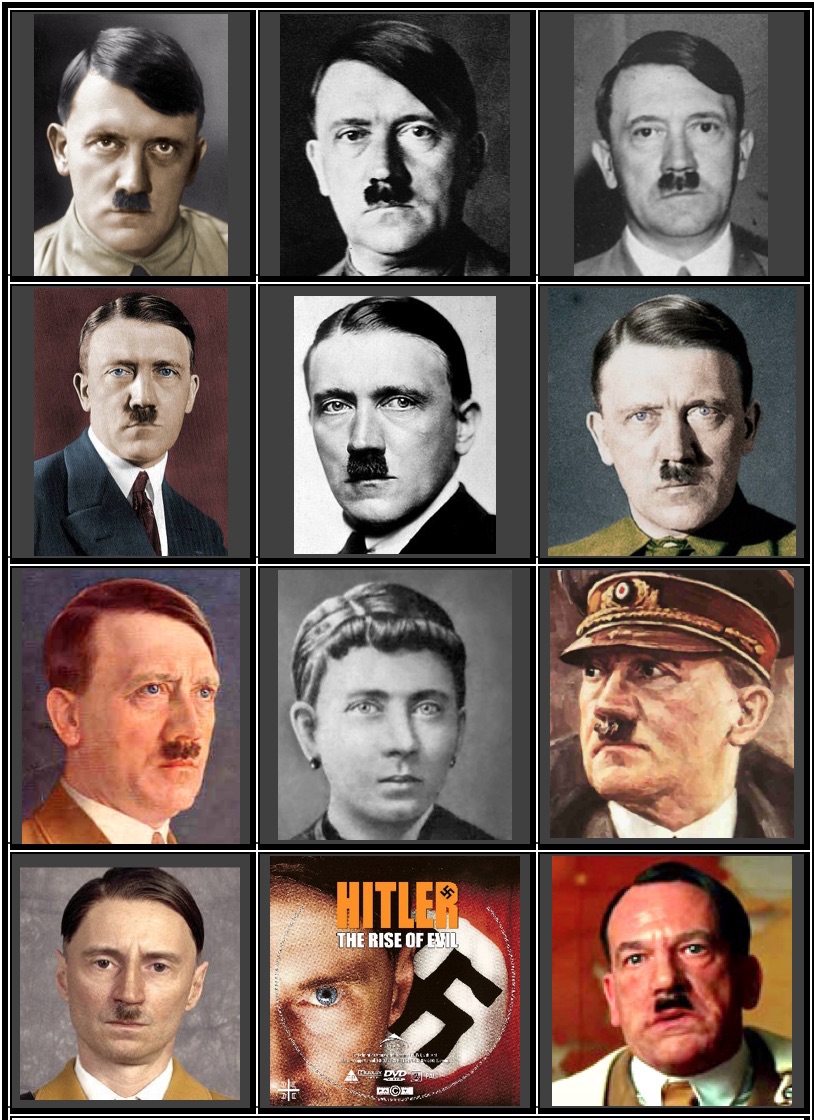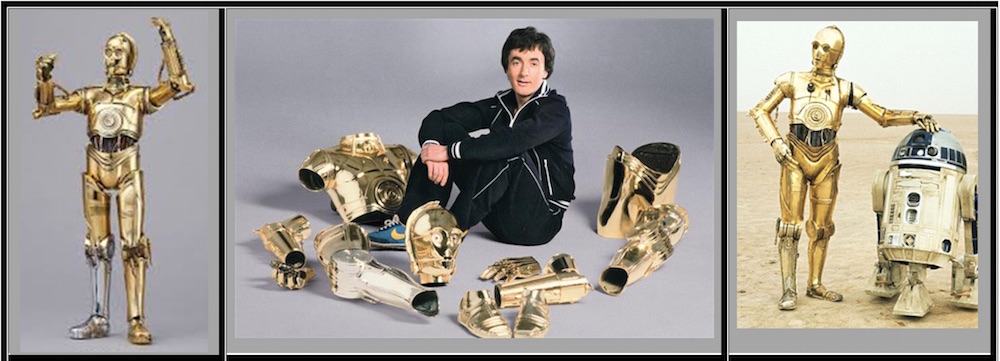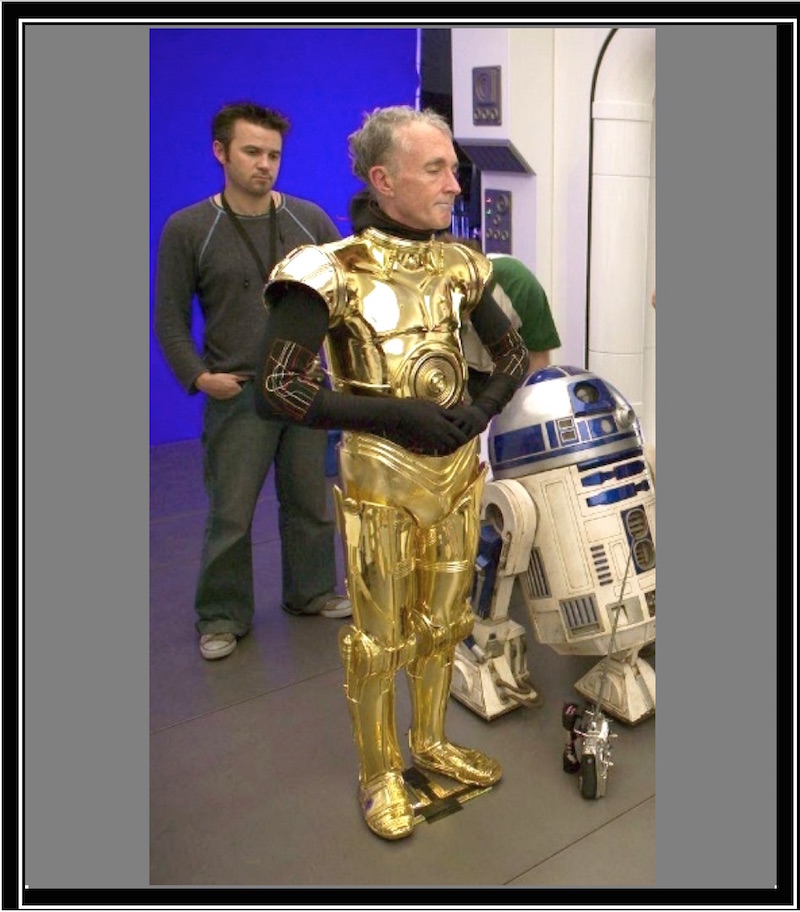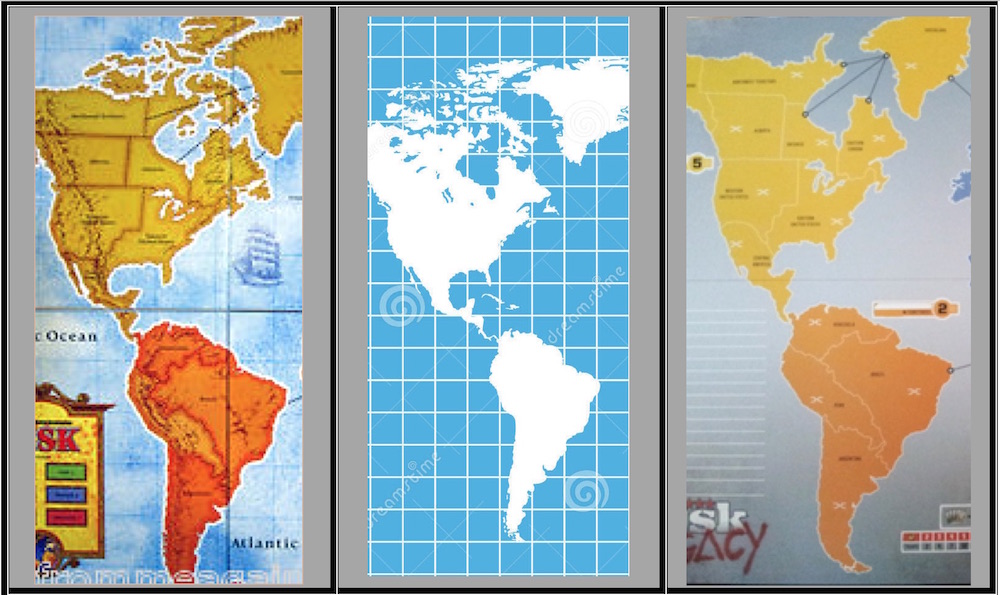

I was once accused by a family member of “believing every conspiracy theory.”
That is an unfair accusation. I only believe in the true ones. But unlike Michael Moore, who says “I’m not interested in conspiracy theories, except the ones that are true,” I am INTERESTED even in theories that may or may not be true…and even in some that are very likely false.
Normally, my interest in any given conspiracy theory can be expressed by a simple algorithm: Multiply “how likely it is to be true” by “how important it would be if it were true.”
9/11 gets a very high score: It’s a proven false flag (ten points on a scale of ten) and of utmost importance (say, 9.5 on a scale of ten) thereby scoring 95 out a possible 100.
By contrast, “Paul McCartney died in an auto accident and was replaced by a look-alike” is neither highly likely nor supremely important, despite Jim Fetzer’s vociferous and bellicose protestations to the contrary.
My conspiracy algorithm rests on the assumption that there is such a thing as “evidence” that we can evaluate using common sense and practical reason.
But what if someone proposed a conspiracy theory which, if true, meant that the very concept of “evidence” was dubious if not meaningless? Would not the “evidence” for that theory be, shall we say, self-undermining?
In the article below, my friend and colleague Rafiq – a contributor to the new book Orlando False Flag: The Clash of Histories – proposes a conspiracy theory to end all conspiracy theories. I find it as philosophically interesting as it is empirically unlikely. Please read and evaluate it without prejudice. At the end of Rafiq’s article, I will offer my own evaluation.
Hitler’s Blue Eyes and the End of Truth
Rafiq
In 1819 poet John Keats wrote the famous line “Beauty is truth, truth beauty.” I take these words to heart. For me, a world imbued with truth is more beautiful than one built on lies. When I see the truth of things, I have a feeling of connection to a whole that is larger and more beautiful than myself. When the poets of Keats’s age recognized a grand intelligence at work in nature, this truth made nature more beautiful, or as they said, “sublime.” When a child solves a puzzle, the solution is beautiful because it is true.
The corollary, of course, is that lies are ugly. When facts are falsified, the coherence and unity of things are lost. All is made grotesque. In 1948 George Orwell illustrated the abject ugliness of universal deceit in his novel Ninety-Eighty-Four, in which the falsely named Ministry of Truth rewrites history to serve the agenda of a fascist state. Its influence extends from news and entertainment to the arts and books.
The lies propagated by the Ministry of Truth in Orwell’s novel have an ugly psychological effect on the citizenry: people are unable to reconcile what they know to be true with what the state says is true. The apparent contradictions and resulting cognitive dissonance can be overcome only by using a technique called “doublethink.” In short, one must rationalize all truth into a state of contingency so that obvious opposites can coexist in the mind as true without one cancelling the other out. When the state demands it, one must allow that 2 + 2 = 5.
Recently, I thought of Orwell’s dystopia when I spotted a picture online of Adolf Hitler with eyes that were not brown but blue. In high school history class, I was told that there was a great irony in the fact that Hitler envisioned a blond-haired, blue-eyed master race yet had brown eyes himself. More than that, I have seen scores of images over the years of a brown-eyed Hitler. Indeed, many of these images can easily be found online, including paintings. In many films depicting Hitler, he is likewise portrayed by brown-eyed actors, such as Robert Carlyle in Christian Duguay’s Hitler: The Rise of Evil (2003) and Martin Wuttke in Quentin Tarantino’s Inglorious Basterds (2009).
You can even find accounts online like this one:
“If you understood German, you’d understand while watching tapes of his speeches why those blonde, blue-eyed Germans cheered so heartily a man whose very appearance contradicted everything he preached. There he was with black hair and brown eyes, as far away as he could come in appearance from the Aryans, the master race with which he wanted to populate the earth. And yet they gave him their loyalty and gave up their lives for him.”[1]
In his novel The Book Thief (2005), Markus Zusak also makes note of Hitler’s brown eyes: “Oh, the eyes, the Führer’s eyes. They were so deliciously brown – like Jews’ eyes – and they were so determined that even Max stood transfixed for a moment as he caught sight of them.”[2]
Yet I soon learned that the official history today is that Hitler’s eyes were blue! Indeed, there seem to be as many images online of a blue-eyed Hitler as there are of a brown-eyed Hitler, including paintings. In one case, the color of Carlyle’s eyes has even been changed to blue on the DVD of Hitler: The Rise of Evil. More than that, online articles offer firsthand descriptions of Hitler’s dazzlingly blue eyes. One of these articles reads, “She was captivated by his ‘startling and unforgettable’ eyes, which she recalled were ‘pale blue in color’ and ‘intense, unwavering, hypnotic.’”[3] Another states, “Hitler had deep blue eyes that many found bewitching, although I did not find them so.” This same witness says of Hitler’s mother, “She had blue eyes like his and a similar face.”[4]
If you grew up with images of a brown-eyed Hitler, as I did, your response might be to suggest that the blue-eyed photos have been altered like the DVD photo of Carlyle. You might suspect that the firsthand descriptions are part of a falsification of history intended to raise Hitler up as the role model that white supremacists have always wanted him to be. You might further note that it all seems a little transparent and poorly done since so many images of a brown-eyed Hitler can be found online. Surely, the painters of a brown-eyed Hitler would have been able to tell the difference between brown eyes and blue eyes!

If you recall a blue-eyed Hitler or have no problem accepting the official history that Hitler’s eyes were blue, your response might be to suggest that people mistakenly thought that Hitler’s eyes were brown because blue eyes can look brown in a black and white photo. You might suspect that the story of Hitler having brown eyes was part of a falsification of history intended to make Hitler look like a hypocrite for championing a blond-haired, blue-eyed master race. You might also make a point of correcting people in online forums who misbelieve that Hitler had brown eyes – just so that we all get on the same page with today’s official history.
If my high school teachers were truly lied to about Hitler having brown eyes, I would have to ask why it has taken so many years for the photos and firsthand accounts of Hitler’s blue eyes to come to light and correct the myth. Surely, such a blatantly false lie could have been countered long ago, even in an age before the Internet. And if we are to accept that Hitler had blue eyes, why has there been no comment on the discovery of this grand concealment that went so sharply against the narrative about the brown-eyed, dark-haired Hitler?
Ultimately, Hitler’s eye color may be a trivial detail that shouldn’t trouble us today. But the fact that it has changed should trouble us. His new eye color appears to have the weight of history behind it – as though it cannot be called into question. Two opposed truths now seem to coexist in our single reality: on the one hand, Hitler had brown eyes; on the other hand, he had blue eyes. This situation seems very much like an Orwellian case of having to accept that 2 + 2 = 5.
Moreover, Hitler’s two eye colors are not the only instance of opposed truths that now appear to coexist in our single reality. Additional instances range from the inconsequential to the significant. For example, the spellings of the names of a number of famous people have changed. Yet the new spellings are said to be the official ones and to have always appeared as they do today.
| Old | New |
| Virginia Wolfe
Desi Arnez Charles Schultz Suzanne Sommers Evil Knievel Pete Townsend Sally Fields Dan Akroyd Christopher Reeves Steven Segal Condoleeza Rice |
Virginia Woolf
Desi Arnaz Charles Schulz Suzanne Somers Evel Knievel Pete Townshend Sally Field Dan Aykroyd Christopher Reeve Steven Seagal Condoleezza Rice |
The table on the right lists some of these names. As with the evidence of Hitler’s brown eyes, there is evidence online of the former spellings. I found many instances in old issues of TV Guide, print articles, and scholarly texts.[5] Yet I also located evidence of the new spellings in what appear to be old media. I found images of supposedly first-edition books with “Virginia Woolf,” not “Wolfe,” on their front covers. And I found images of supposedly original album sleeves that say “Pete Townshend,” not “Townsend.” I even saw an image on eBay of an old and creased poster for the 1984 movie Ghostbusters that says, “Dan Aykroyd,” not “Akroyd.”
Another example of opposed truths that now appear to coexist has to do with the Volkswagen logo. A few years ago, I noticed that the logo had changed. The V used to run down into the W, but now there is a line or even a gap between the two letters. I wondered why Volkswagen had changed its iconic logo. Had the company simply wanted to modernize its image? Then I found out that the new Volkswagen logo is officially not new. The company claims that the logo has always had a line or a gap, as shown in the timeline below.

I lived in a camperized 1984 Volkswagen Vanagon from 2009 to 2011, and I can see the old logo in my photos of the van. Some of the old Volkswagen commercials on YouTube show the old logo.[6] In the Mexican town where I live, I have found the old logo on the hubcaps of old-model VW Bugs and Buses, as shown in the image above. But like the new spellings of famous people’s names, the new logo is not restricted to the present. In fact, I was able to find far more examples of the new logo on the steering wheels, front grills, and hubcaps of very old VW Bugs, Buses, and Things in the streets where I live. Many online photos likewise show the new logo on old Volkswagens.
Another example of opposed truths that now appear to coexist has to do with the Star Wars character C-3PO. Many people say that he used to be colored entirely gold. As a child of the 1970s, I grew up with Star Wars and remember it that way. Indeed, my younger brother sent me a photo of his original C-3PO action figure, and just as we recall from watching the movie and playing with the toys, the action figure is entirely gold. Yet an online search for images of C-3PO today shows action figures and movie stills in which C-3PO’s right leg is silver from the knee down. There is even a photo of a young Anthony Daniels when he first portrayed C-3PO that shows him seated on the ground with his costume spread out beside him, including the silver leg.

 When I saw these images, I went to Netflix and looked at the first Star Wars movie. In all of his scenes, C-3PO’s right leg is obviously silver from the knee down. I have no way to know whether this detail was changed in the online version of the movie. But it is not listed among the changes that director George Lucas made when he released the digitally restored and remastered film on DVD in 2004.
When I saw these images, I went to Netflix and looked at the first Star Wars movie. In all of his scenes, C-3PO’s right leg is obviously silver from the knee down. I have no way to know whether this detail was changed in the online version of the movie. But it is not listed among the changes that director George Lucas made when he released the digitally restored and remastered film on DVD in 2004.
In fact, even Daniels himself claims that the lower right leg was always silver. He explains that the silver acted like a mirror and reflected the brown colors of the desert and the gold color of the left leg. That’s why fans overlooked it.[7] However, this account doesn’t explain the image on the right of Daniels dressed in an all-gold C-3PO costume or why the Star Wars franchise proceeded to make C-3PO action figures that were all-gold, many images of which can be seen online. And it doesn’t explain why the silver leg was noticed only recently, not back in 2004. Yet the official history is that C-3PO’s right leg was always silver from the knee down. Even old VHS tapes of the first Star Wars movie show it that way.[8]
A final example of opposed truths that now appear to coexist has to do with South America. When the continents are displayed on a map, their size and shape can be distorted by the map’s projection. But their position in relation to each other is a matter of latitude and longitude. Every place on the planet has a latitude and longitude that remains constant from map to map. On a grid map, like those below, the lines of latitude and longitude do not show the curvature of the earth. This distortion makes the earth appear to be flat rather than spherical, but the position of the continents is not altered.

The maps on the left and the right are images of older editions of the board game Risk. The map in the center is an image of the western hemisphere of our planet as official history says it exists today and has always existed. Yet there is a striking difference between the current world map and the images of Risk. On the current map, the longitude of the west coast of South America lines up with Florida; on the Risk maps, it lines up with east Texas. On the current map, Panama is a horizontal country, and the Panama Canal runs mostly north to south; on the Risk maps, Panama is a vertical country, and the Panama Canal runs mostly east to west. In short, on the current world map, the west coast of South America is more than a thousand miles farther to the east than on the Risk maps.
If the current world map looks more familiar to you than the Risk maps, you might assume that the Risk maps simply got it wrong. Indeed, the new editions of Risk show the western hemisphere as the current map shows it. However, if the current world map is not the one you recall seeing throughout your life, you might be inclined to ask when it was changed and why this obvious mapping error was perpetuated all the way into the twenty-first century to be corrected only recently. You would expect to find vintage world maps showing the positions of the continents as you recall them. Yet, as with Hitler’s blue eyes, famous people’s changed names, the Volkswagen logo, and C-3PO’s silver leg, old evidence exists of what many people perceive to be South America’s new location. In fact, it is very hard to find any maps that look like the Risk maps above. Even the vintage world maps online locate South America exactly where the current map does.
Many people remember maps on which the longitude of the west coast of South America lined up with east Texas. The World Map Archive contains scores of drawings of the western hemisphere done from memory in which South America appears almost directly below North America, not way to the east.[9] But official history now states that the longitude of the west coast of South America lines up with Florida and always has.
These five examples of opposed truths that now appear to coexist in our single reality are a fraction of the instances people have encountered. Aspects of human anatomy, the names of famous books and movies, the logos and names of numerous other products, and the geography of other parts of the earth now also appear to have old and new versions – both of them supported by past evidence.[10]
So what has caused this phenomenon of coexisting evidence of opposed truths? The examples I have given are not examples of competing interpretations or competing memories of past events. If the issue were one of interpretation or memory, no past evidence would exist to support the now officially false interpretations or memories. Yet in every case, it does exist.
If the issue were one of memory, there would be no credible images that depict Hitler with brown eyes, yet we can see that even black and white photos of a brown-eyed Hitler look noticeably different from black and white photos of a blue-eyed Hitler. We would not be able to find numerous announcements online for productions of Edward Albee’s famous play “Who’s Afraid of Virginia Wolfe” if the spelling has always been “Woolf.” We would not be able to find Volkswagen logos without a line or a gap between the V and the W, yet I have found both physical and photographic examples. We would not be able to find production stills of Anthony Daniels in an all-gold C-3PO costume. And we would not be able to find Risk board games and other renderings of the western hemisphere that differ so obviously from today’s official geography.
The issue instead appears to be something closer to that confronted by the characters in Orwell’s novel. For many people, the facts of our history seem to have changed, yet we “know” that such facts cannot be altered. A person cannot be brown-eyed and then blue-eyed. One description has to be true and the other false. So we might ask whether human history has been subjected to the kind of rewriting done by Orwell’s Ministry of Truth. We might wonder whether we are the object of a deception so massive that an entire ministry would indeed be required to pull it off.
The principle of Ockham’s razor tells us that when choosing between hypothetical explanations for the facts of a phenomenon, we should select the one that requires the fewest assumptions. In the case of the opposed truths that now appear to coexist in our single reality, Ockham’s razor dictates that the hypothesis accepted as most likely must be the one that offers the simplest explanation for the changes themselves as well as for at least the following:
- why the changes are not total, resulting in evidence of the old alongside the new
- why the changes are not uniformly experienced as changes by everyone
There are two general hypotheses that we might consider. The first is that history has been rewritten. For this hypothesis to be possible, we would have to accept that some kind of Ministry of Truth has rewritten original media not only online but also in the physical world. It is true that every single image we see on the Internet, in print, or in films could be a manipulation intended to deceive. But some of the alterations to history discussed above are not restricted to the Internet. They are also experienced in physical reality.
For example, the old Volkswagen logos that I have found on old cars in the streets where I live in Mexico are rusted, faded, or otherwise aged. But the many new Volkswagen logos that I have found on old cars are also rusted, faded, or otherwise aged. Any such rewriting of objects would mean that old physical media were rigged during production to change in people’s homes and on their cars without anyone intruding. Clearly, the idea that such technology might exist within industrial manufacturing takes us beyond the parameters of Ockham’s razor.
Moreover, if a Ministry of Truth has rewritten history, we might expect all occurrences of the affected historical details to have been changed rather than only some of them. For example, on YouTube the credits in original episodes of I Love Lucy now say “Desi Arnaz,” not “Arnez.” And the credits in original episodes of Three’s Company now say “Suzanne Somers,” not “Sommers.” Yet online, the print media generated in response to these shows while they were on television contain numerous instances of the old spellings. Given that complete changes are at least conceivable with Internet content, we must ask why these instances were not changed along with the originals.
Finally, if a Ministry of Truth has rewritten history, we might expect people to uniformly agree that there have been changes to the official history. Yet there seem to be people who remember some of the new details of our reality as though they have always been that way. The rewriting hypothesis cannot explain this aspect of the changes without invoking mass hypnosis or miseducation of select groups across time geared toward these specific changes – even as others in their midst were being educated differently. Again, the idea that such an undertaking might be likely goes beyond the parameters of Ockham’s razor.
The second hypothesis is that history has not simply been rewritten but in fact altered. To consider this possibility, we have to ask whether such changes to past physical reality are even possible. The answer is “maybe.” In quantum physics, “no time” refers to the totality of the universe existing in a single instant. At the scale of human experience, this one instant appears to progress from past to present to future. At the quantum scale, the past, present, and future occur simultaneously. “Delayed-choice experiments” show that photons will follow a new path “according to a choice made ‘after’ the photon” has already followed an original path:
These results indicate that the wave-like or particle-like status of a photon at one point in time can be changed later in time by choosing to measure or observe one of these aspects in spite of the fact that the photon is traveling at light speed … It is as if we cause something to happen “after” it has already occurred … Even the phenomenon of time is tied to specific experimental choices.[11]
The ability of physicists to observe the fact of “no time” in the laboratory has led to speculation about whether time itself can be altered. Is it possible to manipulate time at the quantum level and produce noticeable effects at the macro level of human experience? There are self-proclaimed “time control” researchers who say that the answer is “yes.” Back in 2010 one David Lewis Anderson claimed that his
“time-warped fields use energy within curvatures of spacetime surrounding a rotating mass or energy field to generate containable and controllable fields of closed-timelike curves that can move matter and information forward or backward in time.”[12]
He said that in the lab, his research team had sent plant seedlings back in time and “triggered an event” that killed the “grandfather” of the seedlings. The seedlings were then brought forward to the present intact, but the experiment had changed the DNA of related seedlings in the lab that were not used in the experiment.[13] Anderson’s claims seem incredible, particularly given that no peer-reviewed journal has published his work. Nor has he patented his technology. Nor have his discoveries been heralded around the world. This lack of recognition may not mean that he is a fraud; he could just be so cutting-edge that no one will take him seriously. Nonetheless, he seems to have grown silent over the past half-decade, maintaining a website but producing no substantiated research.
More recently, the Conseil Européen pour la Recherche Nucléaire (CERN) in Geneva, Switzerland, has been conducting experiments to test for the existence of “extra dimensions.” In quantum physics, string theory posits that in addition to the four dimensions that make up physical reality and time, there are seven unseen dimensions. By colliding subatomic particles at unprecedented speeds, the physicists at CERN hope to create “miniature black holes” between our universe and “real universes” in these extra dimensions. CERN physicist Mir Faizal explains,
We predict that gravity can leak into extra dimensions, and if it does, then miniature black holes can be produced … Normally, when people think of the multiverse, they think of the many-worlds interpretation of quantum mechanics, where every possibility is actualised. This cannot be tested and so it is philosophy and not science. This is not what we mean by parallel universes. What we mean is real universes in extra dimensions.[14]
Faizal is careful to make a distinction between universes in extra dimensions and parallel universes that would be only subtly different from ours. He is confident that CERN’s experiments can prove only the former but not the latter. He insists that any miniature black holes opened up by the physicists at CERN cannot be black holes into truly “parallel” universes. However, CERN’s own website is less firm on this point, noting instead that the CERN physicists cannot be sure about the nature of the extra dimensions they may encounter in their experiments: “Extra dimensions would not necessarily consist of alternate worlds, as depicted in science fiction. They could simply be too small for us to see.”[15]
Thus it seems reasonable to ask what would happen if CERN accessed a truly parallel universe and instead of creating a one-way black hole, it created a two-way wormhole or tear, allowing “gravity” to “leak” from that universe into ours and vice versa. Could this event result in entangled timelines both in our dimension and in the other? Could it cause people in each dimension to have experiences of the past that are different from what others experienced – as though two opposed timelines coexisted in each universe’s single reality?
Of course, these questions are pure conjecture. I wouldn’t ask them if not for the fact that the examples of opposed truths discussed above suggest that we are experiencing just such a phenomenon. The field of quantum physics is over a century old. CERN itself was founded in 1954 and is funded by twenty-two member states. There is no question that quantum experimentation today is breaking new ground. So in trying to explain the changes to history that people are seeing, we must at least allow for the possibility of a quantum explanation.
In fact, the hypothesis that history has been altered by some quantum method would explain not only the changes but also their randomness. These types of changes evoke the unintended consequences of revising the past that are speculated about in connection with parallel realities and time travel. They are not unlike the changed DNA of the plant seedlings that Anderson claims he observed. Moreover, the coexistence of evidence of both the old and new historical facts would be explained by the idea that bringing parallel universes into contact with each other could result in the entanglement of distinct timelines rather than in the full replacement of one by the other. Finally, this entanglement of timelines would explain why some people remember the new past whereas others do not. It would suggest that some of us belong to one timeline and some of us to another – at least with respect to some things.
A third possibility is that history has been both rewritten and altered. One can imagine a true quantum alteration of our timeline being hidden amidst hundreds of trivial rewritings of history that are intended to distract us from what has happened. It could be that a Ministry of Truth has been deliberately sloppy in its rewriting of online history in order to preoccupy us with searching for evidence of our past reality. In the meantime, the true alterations are cast into doubt by association with the false rewritings. As the poet Leonard Cohen says, “The story’s told/ With facts and lies.”[16]
Whatever the explanation, this phenomenon of coexisting evidence of opposed truths should not be ignored. Orwell said, “Who controls the past, controls the future.” I would be discouraged to discover that the online images of recent historical events had been altered beyond recognition, rendering invalid all the research that has been done to counter state lies about official history. I don’t want to think that such manipulations of past reality are possible. That would mean the end of historical truth.
Spiritual truth is another matter. Even quantum effects can’t change the truths we intuit deep within ourselves. Whatever has caused the apparent changes to history, we can always take refuge in those intuitive truths and in our own authority.[17] In fact, I strongly advise that we do.
Rafiq wrote his first book, Gaj: The End of Religion (2004), to counter the idea of “God” as an individual who could take sides in the “war on terror.” His memoir Days of Shock, Days of Wonder (2016) tells the story of his confrontation with the spiritual and cognitive dissonance of the 9/11 age. His documentaries Be Smile: The Stories of Two Urban Inuit (2006) and Khanqah: A Sufi Place (2011) are online at Vimeo.
[1] K. Spiro, “The Holocaust,” http://www.simpletoremember.com/articles/a/the_holocaust.
[2] M. Zusak, The Book Thief (2005; reprint, New York: Alfred A. Knopf, 2007), 253, https://www.amazon.com/Book-Thief-Markus-Zusak/dp/0375842209.
[3] “Hitler’s Blue Eyes Charmed American Blonde: Lewis Lapham,” Bloomberg News, 23 March 2012, http://www.bloomberg.com/news/articles/2012-03-23/hitler-s-blue-eyes-charmed-american-blonde-lewis-lapham.
[4] L. Degrelle, “The Enigma of Hitler,” Journal of Historical Review 14, no. 3 (1994): 22–26, http://www.ihr.org/jhr/v14/v14n3p22_degrelle.html.
[5] One example that relates to the old spelling of “Virginia Wolfe” is a 1943 newspaper article that reads, “Sincerity, says Virginia Wolfe, is what the audience of the future … will want more than anything else.” See “The Diary Habit,” Age Literary Supplement (Melbourne) , 16 January 1943, https://news.google.com/newspapers?nid=1300&dat=19430116&id=5bURAAAAIBAJ&sjid=R-kDAAAAIBAJ&pg=6802,546089.
[6] See, for example, the image of the old VW logo at 0:20 of “Old Lady – Volkswagen Golf Commercial,” https://www.youtube.com/watch?v=b4HTLVpey9s.
[7] C. Mallenbaum, “Anthony Daniels Confirms It: C-3PO’s Always Had a Silver Leg,” USA Today, 15 December 2015, http://www.usatoday.com/story/life/entertainthis/2015/12/15/anthony-daniels-c3po-star-wars/77341766.
[8] One YouTube video shows a silver-legged C-3PO on a purportedly 1980s video tape of the first Star Wars movie; it also shows an all-gold C-3PO in an old television show on the making of Star Wars. See Grizzlygaz, “Mandela Effect: You’re Pulling My Leg?” YouTube, 26 August 2016, https://www.youtube.com/watch?v=djY9K1zCZ2k.
[9] “First Try Drawings of the World,” World Map Archive, http://worldmaparchive.tumblr.com.
[10] An online search for the term “Mandela effect” will lead the reader to these other examples. But be aware that some examples may not be true instances of the phenomenon. Also, some skeptics have failed to define this effect accurately. They regard it as collective misremembering and claim that it is a case of false-memory formation, of which there are many types. Instead, this effect is a matter of collective observation of coexisting evidence of opposed truths.
[11] R. Nadeau and M. Kafatos, The Non-Local Universe: The New Physics and Matters of the Mind (New York: Oxford University Press, 1999), 50, https://www.amazon.com/Non-Local-Universe-Physics-Matters-Mind/dp/0195132564.
[12] D.L. Anderson, “Time-Warped Fields,” http://www.andersoninstitute.com/time-warped-fields.html.
[13] This experiment is discussed starting at 28:28 of “Time Travel Possible: Dr. David Lewis Anderson – Time Control Achieved,” YouTube, interview first aired on Time Out with Kevin Gallagher, 28 July 2010, https://www.youtube.com/watch?v=-D5elTmcD4o.
[14] P. Baldwin, “Scientists at Large Hadron Collider Hope to Make Contact with Parallel Universe in Days,” Express (London, England), 22 October 2015, http://www.express.co.uk/news/world/565315/Scientists-at-Large-Hadron-Collider-hope-to-make-contact-with-PARALLEL-UNIVERSE-in-days.
[15] CERN, “Extra Dimensions,” https://press.cern/backgrounders/extra-dimensions.
[16] L. Cohen, “Nevermind,” on the album Popular Problems (2014), https://www.youtube.com/watch?v=N3HbrfV0hJM.
[17] On community-oriented self-authority, see Four Arrows, Point of Departure: Returning to Our More Authentic Worldview for Education and Survival (Charlotte, NC: Information Age Publishing, 2016), https://www.amazon.com/Point-Departure-Returning-Authentic-Worldview/dp/1681235900.
Why I Don’t Buy It: An Alternative Interpretation of the Data
by Kevin Barrett
Rafiq’s article is brilliant, ingenious, fascinating, disturbing…and very likely wrong.
While reading it, I suddenly had a flashback: I was back in 1975, engrossed in my first Philip K. Dick novel: Flow My Tears, the Policeman Said. In that novel, the hero, famous TV host Jason Taverner, wakes up in an alternate timeline in which nobody has ever heard of famous TV host Jason Taverner.
Are we all living in some sort of permanent reality breakdown, trapped in a Philip K. Dick novel, grasping at the flotsam and jetsam of alternate histories in our doomed effort to make sense of things?
Maybe. But the examples Rafiq gives don’t convince me.
Consider Hitler’s blue eyes. Though I had no idea what color Hitler’s eyes were before Rafiq asked me, I would have said “brown” not because I was ever taught that in school, but because Hitler had brown hair, which often goes with brown eyes.
Hitler’s modest stature and brown hair contrast markedly with the Nazi ideal of the tall, blond, blue-eyed ubermensch. This ironic contrast led people to do what they often do when they tell stories: distort the details in service to the larger point. “Hitler’s brown eyes” joined his brown hair and short stature in a sort of urban legend, repeated in schoolrooms and other urban legend transmission locales. The many black-and-white photos of Hitler, and paucity of color photos, helped this urban legend go relatively unchallenged until the age of the internet.
Rafiq, who heard this urban legend (presumably along with thousands of others) in history class, seems to think it was widely promulgated and accepted. Yet I am reasonably certain that I never read or heard anything about Hitler’s eye color, anywhere, until Rafiq brought the issue to my attention. But then again, I don’t notice details like that. If, in a Hitler biography, or any biography, the author mentioned eye color, that is not something I would ever retain. Frankly, I have no idea what any famous person’s eye color is, nor do I have any reason to care.
My wife, however, recalls that in her high school, she learned that Hitler was indeed short, brown-eyed, completely unlike the tall blond Aryan ideal: “We were taught that Hitler was short and brown-eyed, and that he hated Jews so much he made soap out of them. They told us that Hitler wanted to kill everyone with brown eyes, and everyone under six feet tall, which was ironic, because that described him.”
Unfortunately, that is how high school history is often taught: A mixture of fact and urban legend. With Hitler, the ultra-demonized satan of the West’s official Holocaust Religion, urban legend has always eclipsed fact. Generations of kids have been told Hitler made soap and lampshades out of Jews…so it shouldn’t surprise us that the Hitler-villainizers also (unintentionally) lied about his eye color in service to their agenda.
Rafiq’s next set of examples concerns alternate spellings of famous people’s names. I started with Virginia Woolf (NOT Wolfe – that is obviously a misspelling, but perhaps not an uncommon one, since it’s the most common way to spell the name pronounced like “wolf.”) Rafiq supplied me with several examples of the misspelling “Virginia Wolfe.” They are all from relatively sloppy, unedited, extremely “minor” sources where a misspelling would be expected.
“Hitler’s brown eyes” and “Virginia Wolfe” illustrate two extremely common types of misinformation. The former is a detail that is distorted in service to a point; the latter is a “mental typo” in which the actual (unusual but unremarkable) detail is misremembered as the more common form.
How about the messed-up map in the board game Risk? Somehow it doesn’t surprise me. I played Risk a few times as a teenager in the 1970s, and I don’t recall ever thinking that the map was particularly accurate. So unless Rafiq can find some serious maps (US Geological survey, Times World Atlas, etc.) from bygone times that show a different world than the one we’re in, I’m going to write this one off as just a stupid board game map.
But what about “maps drawn from memory”? Memory, my dear Rafiq, is faulty. We “remember” North and South America as being…well…north and south of each other! The fact that South America is far to the east of North America tends to get forgotten, or at least minimized, in our faulty memories.
How about the VW logo? Corporate logos are not cut-and-dried images that never change. They are constantly being presented in slightly different forms. They are endlessly stylized. The presence or absence of a tiny space between the V and the W is not an integral part of the logo. So VW probably put the logo out sometimes one way, sometimes another.
Here are some VW logos from a Google image search:

These logos are not all exactly alike. But that does not prove that they came from separate time-lines! And though the one without the separation between the V and the W is the odd man out, so what? It’s just a slightly more stylized version…a little bit cleaner image that’s also a little bit harder to “read.” The VW people would have reasons to like either variant, and occasionally oscillate between them. There would be no reason to stick with just one, or just the other, for the company’s whole history!
What about C3PO’s gold vs. silver leg, and the names of people like Condoleeza vs. Condoleezza?
I’ll leave those to you, the reader. If these or any of the examples Rafiq offers strike you as truly puzzling, perhaps even valid evidence that our world has been contaminated by multiple timelines, please offer an explanation in the comments section.


Dr. Kevin Barrett, a Ph.D. Arabist-Islamologist is one of America’s best-known critics of the War on Terror.
He is the host of TRUTH JIHAD RADIO; a hard-driving weekly radio show funded by listener subscriptions at Substack and the weekly news roundup FALSE FLAG WEEKLY NEWS (FFWN).
He also has appeared many times on Fox, CNN, PBS, and other broadcast outlets, and has inspired feature stories and op-eds in the New York Times, the Christian Science Monitor, the Chicago Tribune, and other leading publications.
Dr. Barrett has taught at colleges and universities in San Francisco, Paris, and Wisconsin; where he ran for Congress in 2008. He currently works as a nonprofit organizer, author, and talk radio host.
ATTENTION READERS
We See The World From All Sides and Want YOU To Be Fully InformedIn fact, intentional disinformation is a disgraceful scourge in media today. So to assuage any possible errant incorrect information posted herein, we strongly encourage you to seek corroboration from other non-VT sources before forming an educated opinion.
About VT - Policies & Disclosures - Comment Policy




Comments are closed.